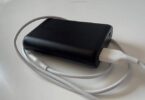The pixel density of an electronic image device is measured using pixels per inch (PPI) and pixels per centimetre (ppm or pixels/cm). You can measure the pixel density of devices like a computer monitor, television display, etc. Additionally, you can measure pixel density of image-digitizing devices like an image scanner or a camera. Generally, vertical and horizontal density are the same, as most devices come with square pixels. However, it will differ on devices with non-square pixels.
You have to know one thing: pixel density and resolution are different. A pixel does not have an inherent size or unit. But when the pixel is displayed, printed, or scanned, it will have pixel density and physical size.
What Is Pixel Density?
Pixel density refers to a calculation returning the number of physical pixels on every inch of your device’s screen. It is called Pixels Per Inch or PPI. In the last few years, the screens’ resolution has boosted dramatically. Therefore, pixel density is becoming important. For instance, a high-resolution screen with 323 PPI is available on the Apple iPhone XR. On the other hand, older XGA monitors were available with around 85 PPI. The increased PPI is capable of improving the quality of the viewing experience. Even if you hold your device closely, you can not find high PPI screens pixelated. It indicates that the picture is of top quality.
Basic Principles:
Digital hardware devices, in most cases, use pixels or dots. Therefore, there is a direct connection between the media size and the number of pixels and the ‘pixels per inch.’ The formula that we have mentioned below can give the pixels vertically or horizontally. In this case, the format’s physical size and the output’s PPI are given:
Number of Pixels = Size in Inches ∗PPI
PPI describes an image file’s detail when you know the print size. Suppose a 100×100 pixel image is printed in a 2-inch square, and comes with a 50-PPI resolution. The measurement will have an impactful meaning when you print an image. In several applications, like Adobe Photoshop, the program is designed in such a way that it can specify the output device as well as PPI in order to create new images. In this way, it is possible to define the output target upon creating the image.
What Are The Key Inputs For Pixel Density Calculation?
The screen’s resolution and physical dimensions go into the pixel density calculation. You get the number of physical pixels from the screen’s resolution_width and resolution_height. In this case, you should know that these are not CSS or logical pixels. Instead, they are physical ones.
How Pixel Density Impacts Image And Video Clarity:
In order to ensure the optimal picture and video quality, pixel density is crucial. The reason is that it is able to directly affect the details and sharpness of the screen. Some things you need to note are:
- Detail And Sharpness: The highest pixel density phone allows you to pack more pixels into the display. Thus, it can showcase finer details in a more improved way. Every pixel can showcase a smaller part of the content and results in improved visual fidelity and smoother edges.
- Resolution Support: If the pixel density of the monitor is high enough, it can offer improved resolution. In this way, it can present more details in a cleaner picture than those displays that have low resolutions and pixel density.
- Reduced Pixelation: The reason behind pixelation is that individual pixels are becoming more visible and give you a less detailed appearance for content. A higher pixel density allows you to avoid this directly, mainly when you need to see the content on the display closely.
- Screen Size And Viewing Distance: If you are close to any content or using a device with a smaller screen, you will want to see a higher pixel density. Pixels’ dense packing indicates that you can see them more easily than the larger screens that you can view from far distances.
- High-Quality Content: For top-quality images and videos, the fact you should know is that the higher pixel density display is able to make a substantial difference in how the content will be presented.
- Graphics And Gaming: When it comes to graphic design and gaming, pixel density is crucial for smooth experience. Besides, it allows you to capture the details of your game display and represent visual effects in a more precise way.
The Role Of Pixel Density In Text And Graphic Rendering:
Here, we are going to mention the role of pixel density in text and graphic rendering:
- Text Clarity: Higher pixel density allows you to represent every character more accurately in written text. It indicates that you will gain more legibility, and can see the text edges appearing smoother across the board.
- Graphic Detail: Pixel density lets you render both graphics and pages. The higher pixel density displays allow you to add and show more details in your images. Thus, the images can get higher sharpness levels and become more realistic.
- Anti-aliasing: You can use this technique on lower-resolution screens to generate more smoothness on the edges for text and graphics. If the screen has a high pixel density, you do not need anti-aliasing too much.
- Graphical User Interface (GUI): Improved clarity can be promoted for icons, buttons, and the user interface’s other elements by pixel density. Graphical User Interface elements on high-density displays will be more refined, and can provide a more visually appealing experience.
- Vector Graphics And Scaling: Vector graphics are resolution-independent and that is why it is so popular. These are capable of scaling without compromising the quality. The high-density displays let you render graphics with a greater accuracy level, and help to maintain sharpness and clarity of them regardless of the size.
- Print Quality And Design Accuracy: If you are a designer who works on a graphic design project, you can get high-accuracy in representing the final design while using a high-density display. When you see that pixel density increases, you will also see a significant increase in the visual quality of graphics and text.
Is A Higher Pixel Density Always Better?
You should always look for the optimal pixel density for your display rather than finding the highest pixel density display. These are a few considerations you would like to remember:
-
Diminishing Returns:
With the increase of pixel density, the improvement in clarity gets reduced. For example, when you look at the screen closely, you get to see the difference between 500 DPI and 700 DPI. But you may not be able to view it at a normal viewing distance.
-
Battery Life:
Remember that battery life is consumed more by the higher pixel densities. The reason is that displaying the smaller pixels requires more power. As a result, it affects the overall life of your device.
-
Cost:
You have to invest more in displays with higher pixel densities. Therefore, before choosing a device with 1080p 24-inch pixel density, ensure that you are able to afford this.
-
Processing Power:
If you render content at higher pixel densities or resolutions, it will need more processing power from the graphics processor of your device and could affect the performance of games and apps in the long run.
-
Content Availability:
When you select pixel densities, you have to ensure that the content supports the display you have chosen. Suppose you use multiple apps. Or you see media with lower-resolution content. In that case, you could not gain all the advantages of a higher pixel density.
-
Viewing Distance:
This factor plays a crucial role. There is no need to go for high pixel density for those devices you can view from a distance.
The pixel density you need for a specific device relies on what device you use. Computer monitors and smartphones do not need something higher than 700 PPI. When it comes to televisions, you have to consider a few factors, such as screen size and viewing distance, rather than only choosing something with a 1080P pixel density.
The higher pixel density displays can provide advantages for clarity. If other factors exist, it indicates that you have to consider whether a high pixel density is the best choice for you. Let’s see the way pixel density changes relying on the chosen display formats:
Smartphones And Tablets:
In order to ensure optimal clarity and sharpness, smartphones and tablets require higher pixel densities. You are able to view that densities range between 300 PPI to over 600 PPI. However, it depends on the screen size and resolution.
Laptops And Computer Monitors:
The size of these devices varies. However, the range of pixel densities remains between 100 PPI and 300 PPI. If your laptop has a higher resolution, it can get higher pixel density, mainly when the screen is larger.
Televisions:
TVs are available in various sizes. However, the pixel densities range between about 40 PPI and about 100 PPI. You can find higher densities on higher-end 4K and 8K TVs to offer a cleaner image setting.
Wearable Devices:
Smartwatches, step trackers, and other wearable devices have smaller screens. It indicates that these wearable devices require high pixel densities. The density should be above 300 PPI to become effective.
Virtual Reality (VR) And Augmented Reality (AR) Devices:
The major purpose of these devices is to offer immersive experiences when you use them. In these cases, the displays have above 600 PPI pixel densities.
Billboards And Large Outdoor Displays:
Pixel densities for LED boards, display billboards, and other big outdoor displays are lower than those on the smaller and personal devices.
For a few of these kinds of devices, display densities can be as low as single digits. Pixel density varies across various display formats and types, especially when you consider screen resolution and size.
How Can Developers Use Pixel Density Or PPI?
When you plan to optimize, resize, or reformat pictures, pixel_density is useful. From Pixel_density, you will get to know about the dimension or compression you are able to reduce before visual quality will be impacted.
Choosing Optimal Pixel Density For Different Screen Sizes And Viewing Distances:
It is already mentioned that the highest pixel density is not always going to be necessary for your display or device. Therefore, how to know which pixel density will be optimal for your device? Let’s check out these parameters:
-
Screen Size:
If you are an Android user, you have to ensure that you use a higher screen density Android for a higher screen size. The reason is that the pixels are spread across a huge area. It indicates that individual pixels will be less noticeable. Higher pixel densities are crucial for small scenes whether you are willing to improve image quality and text across the board.
-
Viewing Distance:
It is necessary to focus on the viewing distance of your device. Suppose you view the device closely. Then, a higher pixel density is essential to make sure that you will not face any problems like pixelation.
-
Content Resolution:
The content resolution needs to be an important factor that you need to consider while making the decision. However, a high pixel density is not essential for those contents that are available in low resolution. The reason is that the content could not capitalize on the capabilities of your display.
-
Running Budget:
You have to keep in mind that you need to invest more in displays with higher pixel densities. So, you need to check all the prices of the LED pixel high density to ensure that you are able to afford the display option you want.
-
Device & Display Performance:
Along with focusing on the device’s capabilities, you also have to check its ability to handle the enhanced resolution displays.
-
User Preferences:
A few people like higher pixel densities. On the other side, other people do not prefer this, and they are good to go with the lower pixel densities. You will not definitely have any problem as long as it will fulfill your requirements.
Pixel Density In Mobile Devices And Laptops:
Nowadays, considering laptops and mobile devices have become impossible without looking into how the pixel densities work. Pixel density helps to offer clarity and sharpness to content. Thus, it can have an impact on the general user experience.
- Multitasking And Productivity: As you need to view more content on the screen, optimal pixel densities let you do many activities at a time when you use productivity apps. It is possible to see more details at a time, without sacrificing clarity.
- Web Browsing: While browsing the internet on your phone, you will need optimal pixel density to get a more realistic experience.
- Augmented Reality (AR): In order to make the virtual look real, each AR app requires accurate rendering. Optimal pixel density ensures that you are capable of increasing the realism of each AR experience.
- Comfortable Viewing: Displays with higher pixel density can be found more comfortable to see and use for long periods. Getting rid of eye strain can be possible using smoother graphics and text. In this way, it can provide a more enjoyable viewing experience.
The Balance Between Battery Life And High Pixel Density:
Pixel density-based devices are likely to come with a problem with optimizing performance. If pixel density is higher, the battery of your device needs to take on more work. These are a few methods through which you are able to strike a balance between pixel density and device performance:
- Power-Efficient Display Technology: Always choose the power-efficient displays.
- Adaptive Brightness: Implementing adaptive brightness settings is also possible. You need to implement those settings which depend on ambient lighting conditions to adjust screen brightness.
- Screen Refresh Rate: You can cut down on refresh rates to save power as the device will perform less.
- Automatic Sleep Mode: It is possible to implement automatic sleep mode or screen timeout by following an inactivity period.
- Software Optimization: In order to reduce power consumption, you have to optimize apps and software. Thus, you can minimize the screen updates which you don’t need.
- Efficient Graphics Rendering: It helps to reduce the workload on the graphics processor unit of your device. As a result, it will use less power.
Factors Affecting Human Pixel Density Perception:
When you determine the optimal pixel density, human pixel density perception is something you have to consider. We also know it as visual acuity. It indicates how you can differ individual pixels and fine details on a display. In order to determine the pixel density, you have to consider some factors, including:
- Pixel Size: How you perceive individual pixels relies on the distance between you and the pixels. Remember that smaller pixels are capable of creating higher pixel densities, and can provide reduced pixelation and improved acuity.
- Distance From The Screen: It is necessary to keep an eye on the viewing distance. You can differentiate between pixels when you are close to the screen. Remember that you will notice less density as you move farther.
- Viewers’ Age: Young people are likely to have better pixel density perception compared to their older counterparts.
- Visual Acuity Variability: Differences in eye health and visual capabilities is one of the important things to consider. While a few people see better, some can’t.
- Content Type: The content type you will see also matters. If the content is sharp text and higher-resolution images, it will reveal the pixel density distinctions, when it is compared with blurry content or low resolutions.
- Display Size: Display size is going to influence pixel density perception. You can find a smaller display more pixelated when you view it up close than a larger display that you can see from far away.
How To Balance Between Pixel Density And Visual Performance:
If you are considering both pixel density and visual performance, it is essential to get the proper combination of display technologies, pixel density etc in order to produce an appealing experience for viewers of your LED signs or other displays. These are the things you need to remember to get this proper balance:
- Optimal Pixel Density: Your first job should be to look for the proper pixel density that is suitable for your device and use cases.
- Display Technology: You have to select the right display technology that is capable of providing an adequate balance between quality and visual performance.
- Display Resolution: While you have to focus on pixel density, you also need to keep an eye on the overall display resolution. So, if you want content with more details across the board, you need to use higher-resolution displays. However, you still have to consider processing power requirements.
- Graphics Processing Power: It is necessary to ensure that the GPU is capable of handling the demands of your pixel density and selected resolution.
- Refresh Rate: In order to improve visual performance, you can go with refresh rates like 90Hz, 120HZ, etc. But one thing you need to know is that these soak up much power. Therefore, you can find the adaptive refresh rates better.
- Battery Life: You need to always keep in mind that power efficiency should get the most importance. When you are not using the display, you need to optimize its performance as much as possible.
What Is PPI Resolution?
PPI, or Pixels per inch, indicates the number of pixels that are available within every inch of a digital image. It indicates the set number of pixels which are shown by a screen. You can get better image quality from the higher PPI. Lower pixels are available in fewer numbers in the lower-resolution images and produce a granular effect. That’s why it is called ‘pixelated.’ Greater numbers of smaller pixels are good for higher resolution levels. These can produce clarity, depth, and smoothness.
How Does PPI Differ From DPI?
DPI stands for dots per inch, and it is similar to PPI. But the term is used in print media. It does not measure pixels. Rather than that, it measures physical dots of cyan, yellow, magenta, and key ink on any printed picture. You can see small dots like pixels while zooming in far enough.
While DPI can be considered as the print output, you can consider PPI as the digital input. A high DPI level corresponds with improved quality and detail.
How To Find The PPI Of An Image:
In order to find a picture’s PPI, you need to know a simple equation:
Number of pixels ÷ size of the image in inches = pixels per inch
Several digital pictures are available with their PPI details in their metadata. You have to use software or native computer programs to find the PPI.
How To Find Pixels Per Inch On Windows:
These are the steps you need to follow to find pixels per inch on Windows:
- Your first task is to find the picture on File Explorer or desktop.
- Now, you need to right-click the image. After clicking, you need to select Properties.
- In order to find the resolution, you need to navigate to the Details tab.
Alternatively, you are able to use Windows Photos to open the file.
- Your first job is to open the file by double-clicking your image.
- Then, you have to tap on three dots which are located at the screen’s top.
- Now, you need to scroll down the page to File Info.
- Finally, you have to look for DPI/PPI details that will be available under the Size Info heading.
How To Find Pixels Per Inch On Mac:
- Your first task is to open the Finder app in the toolbar.
- Now, you have to go to your file.
- After that, your job is to right-click the file. Then, you need to select Open with. Now, you have to select Preview.
- Next, your job is to tap on Tools. Then, you have to click on Show Inspector.
- You can get the details of PPI from the display list.
#How To Find Pixels Per Inch On Photoshop:
- You first need to open your picture in Photoshop.
- Then, you have to tap on Image and then Image Size. You need to open the dialogue box.
- Your job now is getting PPI from the Resolution field. In order to increase or decrease the PPI, you are able to use this.
How Many Pixels Per Inch Do You Need?
Optimal PPI relies on the picture’s size and purpose. Suppose you are displaying a picture on a website. In that case, the PPI resolution level has to be far lower than if you are printing off a photo. Some rough PPI measures that could be used for the project are:
High-res Pixels Per Inch:
Compared to the 72 PPI standard, these displays are capable of handling more PPI on screen. Suppose you want to display pictures on a large HD monitor. In that case, you are able to afford a far higher PPI level than the average laptop. The range of a high pixel density is between 100-140 PPI. Generally, the starting PPI of a very high pixel density is 140.
Pixels Per Inch For Web:
The standard PPI of web images is 72. In order to generate an engaging website or online existence, vibrant imagery becomes crucial. In that case, you have to balance details, richness, and clarity with load times. That’s why it is better to go with a web-optimized 72 PPI level. The reason is that it enables you to load quickly. Also, you can get a clear visual experience. Do you want to showcase higher-resolution pictures for your digital portfolio or an online art exhibition? If so, then you can go with the higher ones.
Pixels Per Inch For Print:
Remember that if it comes to the printed page, higher pixel density is essential whether you want nature photographs for a glossy magazine or a direct mail brochure. In such cases, 300 PPI is suitable for people who are willing to create great print material. It corresponds to the 300 DPI that the printer needs to deliver a top-quality finish. You can choose lower PPI for smaller designs or non-commercial use. The common choices are 180 PPI and 240 PPI.
How To Change Pixels/Inches in Photoshop:
In order to suit the media format Or purpose, changing your image’s PPI resolution is possible. These are the steps that you need to follow:
- You first need to open the image in Photoshop.
- Then, your task is to navigate to the Image. Then, you have to go to Image Size.
- Now, your job is to deselect the Resample option.
- At last, your task is to enter a new value.
Pixel Density On Android:
When you are planning to develop an Android app, you can display elements on screen using Dp with various densities.
Dp And Screen Density:
A DP will be equal to a physical pixel with 160 density on a screen. In order to calculate dp, you can check the formula:
dp = (width in pixels * 160) / screen density
Scalable Pixels (sp):
It is able to serve the same function as dp, but for fonts. Its value is the same as the default value for a DP. Sp can preserve the font settings of a user, which is the major difference between a DP and a sp. If you have larger text settings for accessibility, you will see that the font sizes are matching the text size preferences.
Pixel Density On iOS:
iOS uses logical resolution to determine density. It measures its units in points.
Logical Resolution:
You can use a Native Scale factor to scale points with logical resolution. It maps to the native resolution of your device. When you design for the iPhone X, it is necessary to design for a logical resolution of 375 x 812 points. Graphics hardware will process elements when rendered in order to fill the 1125 x 2436 pixel screen of iPhone X.
Units For iOS:
You have to use points (pts) to design for iOS.
Pixel Density On The Web:
Logical Resolution:
The logical resolution of your device is used to scale to the screen resolution of your device.
Units For The Web:
When you design for the web, replacing dp with px is necessary.
Device Resolution vs. Pixel Density:
Resolution refers to the number of pixels that you can find in every dimension shown on the screen. Suppose a device has a “1024 × 768” resolution. It means that the width is 1024 pixels, and the height is 768 pixels.
Generally, pixel density is measured in Pixels Per Inch, which indicates the number of pixels you can find in every inch of the display. If the pixel density is higher in every inch, you will be able to get more clarity and sharpness while using the device.
The Bottom Line:
If you want to get the best viewing experience, it is advised to use displays with a pixel density that ranges from ~110 to 140 PPI. At this pixel density, it is possible to get sharp details without using any scaling. However, you should go for higher pixel density, if you want to get better picture quality.
Frequently Asked Questions
- What is a good pixel density?
Displays with pixel density between ~110 and 140 PPI range can provide the best viewing experience.
- How to calculate pixel density?
If you want to calculate a device’s PPI, you have to divide the total pixels by the diagonal screen size.
- Is 300-pixel density good?
Yes, 300-pixel density is good for those who want to create great print material.






